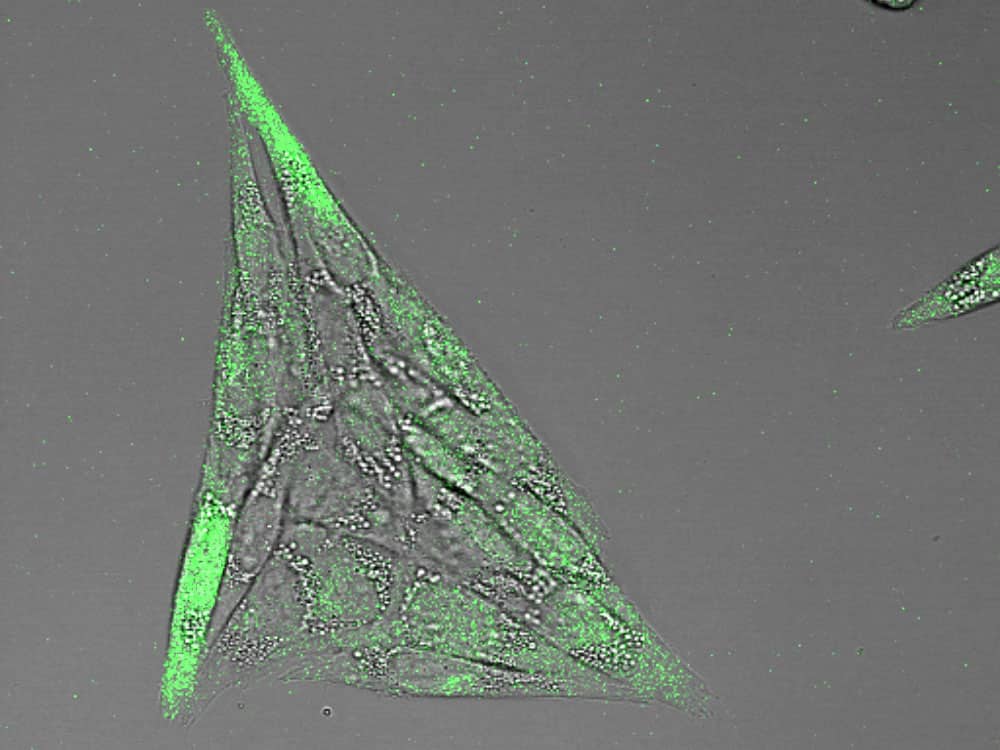Enzyme Loaded Bioactive Nanocapsules To Control Cell Behavior
Defects in signaling pathways of body cells could lead to many diseases. To control these signaling pathways, bioactive nanocapsules could become a valuable tool for medicine, in the future. University of Basel researchers have succeeded in having various different nanocapsules work together to
influence cell behavior and amplify a natural signaling cascade.Just like how humans need ears to hear sounds and knowledge of language to process their meaning, cells communicate all the time with each other and have their own ways of picking up signals and processing them. To treat various diseases, controlling the cell’s own signaling pathways is of keen interest in designing medicines.
Bioactive materials that could be suitable for this purpose have been developed by a research team the Department of Chemistry at the University of Basel and the NCCR Molecular Systems Engineering. Nanomaterials with natural molecules and cells were combined by the researchers led by Professor Cornelia Palivan in order to achieve this. The research team reported the details of this work in the journal ACS Nano. The details on how the enzyme loaded nano-capsules are able to enter the cell and how they are able to amplify a natural signaling pathway are reported in it.
The research team loaded the enzymes into polymeric small capsules in order to protect them from degradation in a cellular environment. There are biological pores specifically inserted in the compartment’s synthetic wall, and molecules can react with the enzymes inside by entering through these pores.
Experiments with nano-capsules harboring different enzymes that worked in tandem were conducted by the researchers: the first enzymatic reaction’s product started the second reaction inside a second capsule after entering the second capsule. These nano-capsuled actively participated in natural reactions in mammalian cells and could stay operative for days.
Since defects in the Nitric oxide (NO) signaling pathway is involved in the emergence of cardiovascular diseases, in muscular and retinal dystrophies, it is a well-studied cellular mechanism. Using an enzyme family called nitric oxide synthases (NOS), the pathway encompasses the production of NO. Another enzyme named soluble guanylate cyclase (sGC) senses the NO when it diffuses to other cells. A cascade reaction is started by the activation of sGC, regulating a number of different processes like the processing of light by sensory cells, smooth muscle relaxation, and much more.

Capsules harboring NOS and sGC were produced by the researchers lead by Palivan. Producing NO, the NOS-capsules act similarly to loudspeakers, “shouting” their signal loud and clear; and the sGC-capsules sense and process the signal to amplify the response, acting as “ears.”
The scientists showed that the cells became much more reactive with the combination of both NOS and sGC loaded capsules, with an 8-fold increase in the intracellular calcium level, using the intracellular concentration of calcium, which depends on the action of sGC, as an indicator.
The first author of the study, Dr. Andrea Belluati commented, “Combining nanoscience with biomolecules to stimulate such changes in cellular physiology is a new strategy.”
Cornelia Palivan added saying, “In the field of enzyme replacement therapy for diseases such as several dystrophies or cardiovascular diseases where biochemical pathways malfunction, this proof of concept is an important step.”
Source
Enzyme Loaded Bioactive Nanocapsules To Control Cell Behavior






























